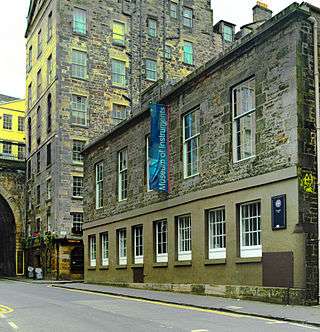St Cecilia's Hall

St Cecilia’s Hall in Edinburgh was originally commissioned by the Edinburgh Musical Society (EMS) and designed by Robert Mylne. It became the first purpose-built concert hall in Scotland when it was completed in 1763, not far behind the first in Europe, the Holywell Music Room in Oxford, built in 1748. The last EMS concert was held in 1798, though momentum had been waning since the opening of the New Town Assembly Rooms in 1787 and the construction of the South Bridge in 1788. By 1801, the EMS had quietly disbanded and sold their hall to a Baptist congregation.[1]
In the 250 years since its construction, it has served as a Baptist church, a Freemason’s lodge, a warehouse, a school headed by Andrew Bell, and most recently, Magdalene Cairns’s Excelsior Ballroom. The historic building was purchased by the University of Edinburgh in 1959. Today, St Cecilia’s serves as a musical instrument museum, one of two branches of the Edinburgh University Collection of Historic Musical Instruments. (EUCHMI), housing the Raymond Russell and the Rodger Mirrey Collections of Early Keyboard Instruments and the Anne Macaulay Collection of Plucked String Instruments.[1] It houses 50 of the world's best-preserved early keyboard instruments: harpsichords, virginals, spinets, organs and fortepianos from around 1840, many still playable.[2] The collection also includes harps, lutes, citterns and guitars.
Its redevelopment was partly funded by the Heritage Lottery Fund, as part of their work to support historical buildings of cultural importance.[3]
The museum is usually open to the public on Wednesday and Saturdays from 2pm to 5pm. It is also open to the public during the Edinburgh International Festival and Edinburgh Festival Fringe, for which it is sometimes used for events.[2]
References
- 1 2 "A Brief History of St Cecilia's Hall". University of Edinburgh.
- 1 2 "St Cecilia's Hall". Edinburgh Guide. Retrieved 20 March 2016.
- ↑ "St Cecilia's Hall Redevelopment Project".
External links
- Site record for Cecilia's Hall, Royal Commission on the Ancient and Historical Monuments of Scotland
Coordinates: 55°56′56″N 3°11′11″W / 55.9490°N 3.1865°W